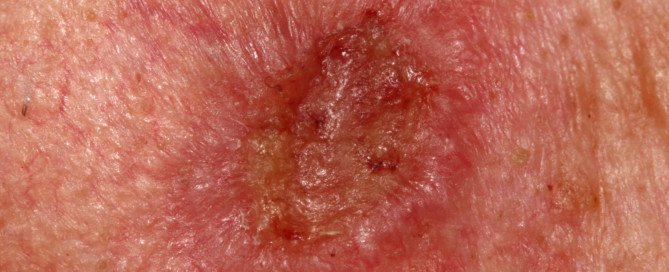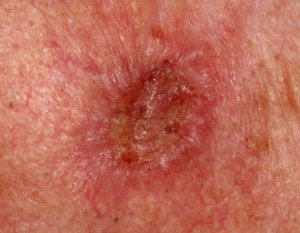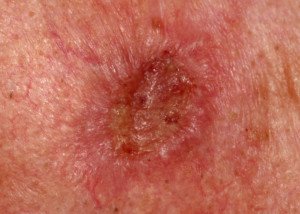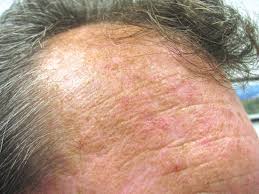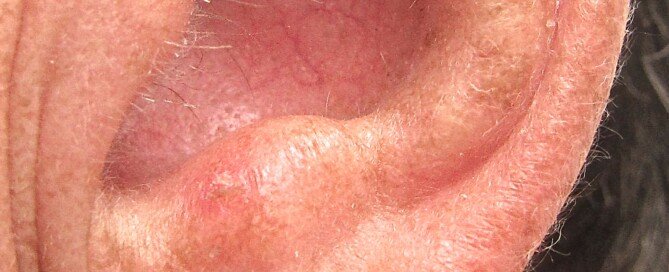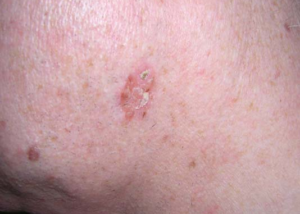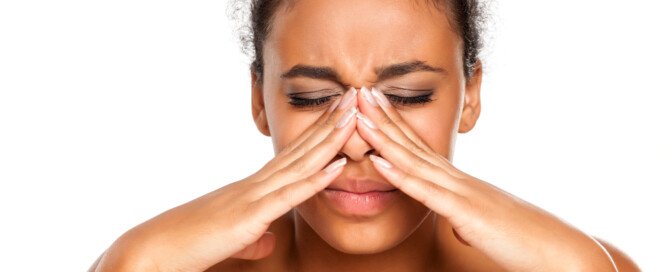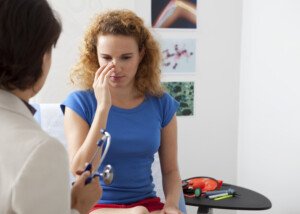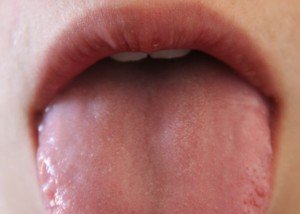Is Estrogen Connected to Microscopic Colitis?
It is suspected by some women with microscopic colitis that estrogen might somehow be involved with this uncommon inflammatory bowel disease. (more…)
Is Walking Enough Exercise to Control Type 2 Diabetes?
Walking may or may NOT be enough to control type 2 diabetes. It depends on how you do it. (more…)
What Percentage of Actinic Keratoses Become Squamous Cancer?
There’s a percentage range of actinic keratoses turning into squamous cell carcinoma, which is why these seemingly harmless skin lesions should never be ignored.
Furthermore, the appearance of very early squamous cell carcinoma can mimic actinic keratosis.
“The lifetime risk of actinic keratosis to progress to squamous cell carcinoma is two to five percent,” says Vishal Madan, MD, consultant dermatologist, laser and skin cancer surgeon, and founder/director of Everything Skin Clinic™.
Dr. Madan explains, “Small flat actinic keratosis may never progress to squamous cell carcinoma, while a tender, thick, hyperkeratotic AK has a higher risk of progression to SCC — especially if there are other risk factors such as immunosuppression, previous history of SCC or severely sun damaged skin.”
The Journal of the American Academy of Dermatology (Callen et al) states, “Estimates of the percentage of these chromosomally abnormal skin lesions that convert to squamous cell carcinoma vary from 0.25% to 20% per year for an individual lesion.”
The paper continues, “It is impossible to predict accurately in which patient a squamous cell carcinoma will develop.”
The percentage ranges may be broad, depending on the particulars of an investigative study.
Nobody really knows an exact percentage, since studies do not round up people with actinic keratoses and then instruct them never to get these precancerous lesions treated and then follow them for the rest of their lives.
What’s known for sure is that the percentage is small rather than significant, but high enough that people with actinic keratoses should get these lesions removed, even if it takes multiple attempts.
They are removed via either a spraying directly onto the lesion with frozen nitrogen, or a prescription cream applied directly onto the lesion.
“Actinic keratoses must be treated to prevent their conversion to squamous cell carcinoma,” continues the JAAD paper.
If you’ve been diagnosed with actinic keratosis, then it’s a no-brainer: Get them treated — even if they aren’t that visible.
AK’s grow very slowly and may be much more progressed before you even know it.
You don’t want to be in that small percentage whose actinic keratoses transforms into a malignancy.
The cancer will never be melanoma; it’s squamous cell carcinoma.
However…SCC can be fatal – because it will metastasize if not treated.
Don’t confuse SCC with basal cell carcinoma, for which metastasized cases are exceedingly rare – and only then, due to neglect.
Actinic keratosis are extremely common.
This is why many dermatologists have a canister or two of liquid nitrogen (cryotherapy) sitting on their office desk, ready for use.
You may have a few lesions right now and not even know it.
This is why (in addition for melanoma screenings) you should have a clinical skin exam by a dermatologist every year.
AK’s can mimic seborrheic keratoses. Do not self-diagnose. See a dermatologist.

Specializing in the diagnosis and treatment of all skin conditions including melanoma, Dr. Madan has a special interest in skin cancer treatment, including Mohs micrographic surgery for basal cell carcinoma.
 Lorra Garrick has been covering medical, fitness and cybersecurity topics for many years, having written thousands of articles for print magazines and websites, including as a ghostwriter. She’s also a former ACE-certified personal trainer.
Lorra Garrick has been covering medical, fitness and cybersecurity topics for many years, having written thousands of articles for print magazines and websites, including as a ghostwriter. She’s also a former ACE-certified personal trainer.
Top image: Shutterstock/Dermatology11
Source jaad.org/article/S0190-9622(97)70265-2/abstract
Panicking Over a Diagnosis of Actinic Keratosis?
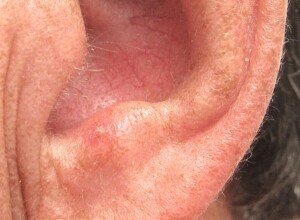
If you’ve just been diagnosed with actinic keratosis, you probably already know that this is precancer and may be panicking. (more…)
Do Children Get Pancreatic Cancer?

If children can get pancreatic cancer, just how many actually develop this disease? And what should parents look out for?
“I have not seen this in my career,” says Robert Saul, MD, a board certified pediatrician for 40+ years and Professor of Pediatrics at Prisma Health Children’s Hospital and the University of South Carolina School of Medicine.
Dr. Saul adds, “But yes, children can get pancreatic cancer.”
In fact, even infants can be diagnosed with pancreatic cancer – a disease that can strike at any age.
However, “can” does not mean that parents should worry that their child might have pancreatic cancer.
Certainly, if one’s child is experiencing new and unexplained symptoms, they should be seen by a pediatrician.
Let the pediatrician take it from there, and do not worry about a disease that has an incidence of 0.46 cases per one million people under age 30.
The median age of diagnosis is 70, but one tenth of a percent of cases occur in people under the age of 20. Again, this includes babies.
See the chart below from the National Cancer Institute Surveillance, Epidemiology and End Results Program for number of diagnosed cases per age bracket.
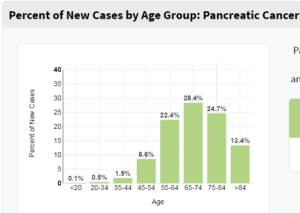
The Journal of Pediatric Surgery has covered the phenomenon of pancreatic cancer in children.
In one paper, one particular medical institution had six cases of pediatric pancreatic neoplasms between 1971 and 1991.
So it’s exceedingly rare, but not impossible, for this age group to get this very difficult to treat disease.
The six patients were between three weeks old and 16 years.
There are different kinds of pancreatic cancer. In the case of these young patients, there were one insulin-secreting tumor, one pancreatoblastoma and three solid cystic tumors.
The paper reports that surgery was the only treatment, and that the young patients were all alive on an average of 7.8 years later.
Another paper of the same journal but different issue reports on 58 patients having either an exocrine type of tumor, endocrine type or sarcoma.
The pancreatoblastoma was more commonly seen in kids under 10 years.
About half the 58 patients had metastatic disease, and 44 percent of these entailed the endocrine type.
Don’t Ignore Symptoms
If your child starts having abdominal pain, nausea or fatigue, you certainly do not want to start fearing that he or she might have pancreatic cancer.
It really is just so unlikely.
But DO take your child to their pediatrician to find out what’s behind these or any other new symptoms.
 Dr. Saul is the coauthor of “Thinking Developmentally: Nurturing Wellness in Childhood to Promote Lifelong Health,” and author of “Conscious Parenting: Using the Parental Awareness Threshold.” His website is mychildrenschildren.com.
Dr. Saul is the coauthor of “Thinking Developmentally: Nurturing Wellness in Childhood to Promote Lifelong Health,” and author of “Conscious Parenting: Using the Parental Awareness Threshold.” His website is mychildrenschildren.com.
 Lorra Garrick has been covering medical, fitness and cybersecurity topics for many years, having written thousands of articles for print magazines and websites, including as a ghostwriter. She’s also a former ACE-certified personal trainer.
Lorra Garrick has been covering medical, fitness and cybersecurity topics for many years, having written thousands of articles for print magazines and websites, including as a ghostwriter. She’s also a former ACE-certified personal trainer.
.
Top image: ©Lorra Garrick
Sources
sciencedirect.com/science/article/pii/002234689290284E
jpedsurg.org/article/S0022-3468(08)00894-4/abstract
seer.cancer.gov/statfacts/html/pancreas.html
Are Heart Palpitations Normal with Fibromyalgia?
Your fibromyalgia MAY be the cause of your heart palpitations, but not in the way you might be thinking.
Just because fibromyalgia has been known to cause the perception of heart palpitations doesn’t mean that you can’t possibly have a cardiac arrhythmia or some other disorder that’s causing the fluttering or “skipped” heartbeat.
The hallmark features of fibromyalgia are chronic body-wide pain and tenderness. There may also be fatigue and dizziness.
But in fibromyalgia, there is also a dysfunction of the autonomic nervous system (ANS). And the ANS regulates heartbeat.
Many sufferers of fibromyalgia will report that their heart races or pounds after they rise from a seated position.
If all the pulse does is go up, this technically isn’t a palpitation, but rather, merely a sped-up heart rate (tachycardia). Though to the patient, it may be described as “palpitations.”
The tilt table test is very useful in evaluating ANS dysfunction in those with fibromyalgia who report frequent heart palpitations.
Commonly, patients will report tachycardia during tilt table testing. Because it’s triggered by postural changes, it’s called orthostatic tachycardia syndrome.
It means that the pulse has risen more than 30 beats per minute after more than three minutes standing upright.
This doesn’t mean that the heartbeat has literally skipped or fluttered. It’s a steady rate, though elevated.
If you perceive a skipped, fluttering or irregular heartbeat from time to time, and just happen to have fibromyalgia, here is something to consider:
“Fibromyalgia presents with varied symptoms, and yes, some patients with fibromyalgia report palpitations, possibly due in part to increased awareness of pain, and associated anxiety in some patients,” says Glenn Meininger, MD, Director of Cardiac Electrophysiology Services for the Baltimore region of the MedStar Heart & Vascular Institute.
If you have fibromyalgia, it would still be a smart move to have a cardiologist examine you.
“Palpitations can be benign or less worrisome when they are associated in isolation with anxiety, fatigue, alcohol or caffeine consumption, says Melissa Franckowiak, MD, an anesthesiologist in Lockport, NY.
“They can and do occur as part of fibromyalgia, especially since anxiety and fatigue occur more frequently in fibromyalgia patients than in the general population.
“The most important thing to note is how palpitations change in their symptomatology. Has there been an increase in their occurrence or are they becoming associated with chest pain?
“If there has been a noted increase in frequency, duration of how long they tend to last, or if there has been associated chest pain or shortness of breath with them, especially with exertion, they should be reevaluated.”
And keep in mind that other conditions can cause a jumpy heart such as overactive thyroid, persistent anxiety and high caffeine intake.


Dr. Meininger is board certified in cardiac electrophysiology, cardiovascular disease and internal medicine and is widely regarded as an expert in the use of multiple modalities to treat cardiac arrhythmias.
 Dr. Franckowiak is the inventor of two patented medical devices and the CEO of Pneumaglide, providing airway solutions to the surgical services and emergency medical services communities. A fiction writer under the name of Melissa Crickard, she is the author of “The Labrador Response” and “Another Five Patients,” available on Amazon.
Dr. Franckowiak is the inventor of two patented medical devices and the CEO of Pneumaglide, providing airway solutions to the surgical services and emergency medical services communities. A fiction writer under the name of Melissa Crickard, she is the author of “The Labrador Response” and “Another Five Patients,” available on Amazon.
 Lorra Garrick has been covering medical, fitness and cybersecurity topics for many years, having written thousands of articles for print magazines and websites, including as a ghostwriter. She’s also a former ACE-certified personal trainer.
Lorra Garrick has been covering medical, fitness and cybersecurity topics for many years, having written thousands of articles for print magazines and websites, including as a ghostwriter. She’s also a former ACE-certified personal trainer.
.
Top image: Shutterstock/designer491
Source
springer.com/article/10.1007/s11926-008-0076-8, Current Rheumatology Reports (Dec. 2008)
Can TMJ Disorder Interfere with Nasal Breathing?
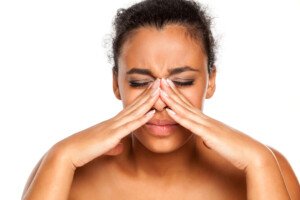
Do you have TMJ disorder and now have begun having trouble breathing through your nose?
Temporomandibular joint disorder causes many more symptoms than just jaw clicking and jaw pain. (more…)
Can Wisdom Teeth Removal Cause Nosebleeds?

You just had your wisdom teeth removed. You’re now having bloody noses. Is there a connection?
“Some oozing after wisdom teeth (upper wisdom teeth) removal is to be expected for a few minutes to an hour or two, as the blood from the extraction site could flow through the sinus to the nose,” explains Brijesh Chandwani, DMD, BDS, Diplomate, American Board of Orofacial Pain, with Connecticut & NY TMJ. (more…)
What Makes Tongue Sore Underneath after Dental Work?
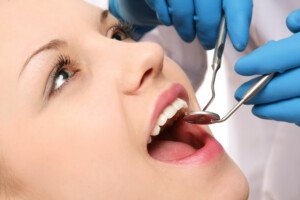
Have you ever noticed how sore your tongue was in the hours after receiving dental work?
Does this mean the dentist went to hard on you?
Can it mean that maybe something’s seriously wrong with the area beneath your tongue?
Sore Tongue Underneath After Dental Work
“The structure of the tongue consists of sensitive mucosa due to its highly sensitive function such as taste, speech and digestion,” says Brijesh Chandwani, DMD, BDS, Diplomate, American Board of Orofacial Pain, with Connecticut & NY TMJ.
“It can get irritated with mechanical trauma (such as biting the tongue or roughness in certain foods) or very hot drinks,” continues Dr. Chandwani.
One such food that can cause irritation to the tongue are triangular shaped tortilla chips.
Whether these chips are whole or in fragments, they come with many pointy edges that, when chewed enthusiastically, can cause soreness to the tongue.
If you by chance receive dental work a day or two after eating a lot of pointed-edged tortilla chips or similar food, you’re bound to feel some soreness about the tongue.
Dr. Chandwani continues, “It can also get irritated from friction between tongue and dental work (filling, denture, crown or bridge).
“The dental work may or may not be sharp; friction can make the tongue sore.
“As the tongue is rich in nerve supply (it can even perceive an extremely tiny foreign body such as a piece of hair), it gets aware of the slightest change in its surroundings right away — which sometimes leads to a behavior of repeated physical friction to the new dental work.
“Sometimes the dental work may have to be smoothed/contoured; most times the tongue tends to adapt to the change.”
Give the soreness several days to settle down. Avoid foods that can aggravate any structure inside the mouth (sharp-edged foods, chips, hard candy, shelled candy, raw carrots and celery, even crisp lettuce). Also avoid hot beverages.
And don’t keep feeling your tongue to “test it out.”

Dr. Chandwani has 15+ years of experience focusing on TMJ disorders and sleep disorders.
 Lorra Garrick has been covering medical, fitness and cybersecurity topics for many years, having written thousands of articles for print magazines and websites, including as a ghostwriter. She’s also a former ACE-certified personal trainer.
Lorra Garrick has been covering medical, fitness and cybersecurity topics for many years, having written thousands of articles for print magazines and websites, including as a ghostwriter. She’s also a former ACE-certified personal trainer.
.
Top image: Shutterstock/sheff
Why Don’t Beta Blockers Alone Allow Sports in Long QT Syndrome?

People with long QT syndrome are typically told to avoid playing sports.
And beta-blocker drugs to lower the risk of suffering a sudden cardiac arrest is the standard of treatment. (more…)











